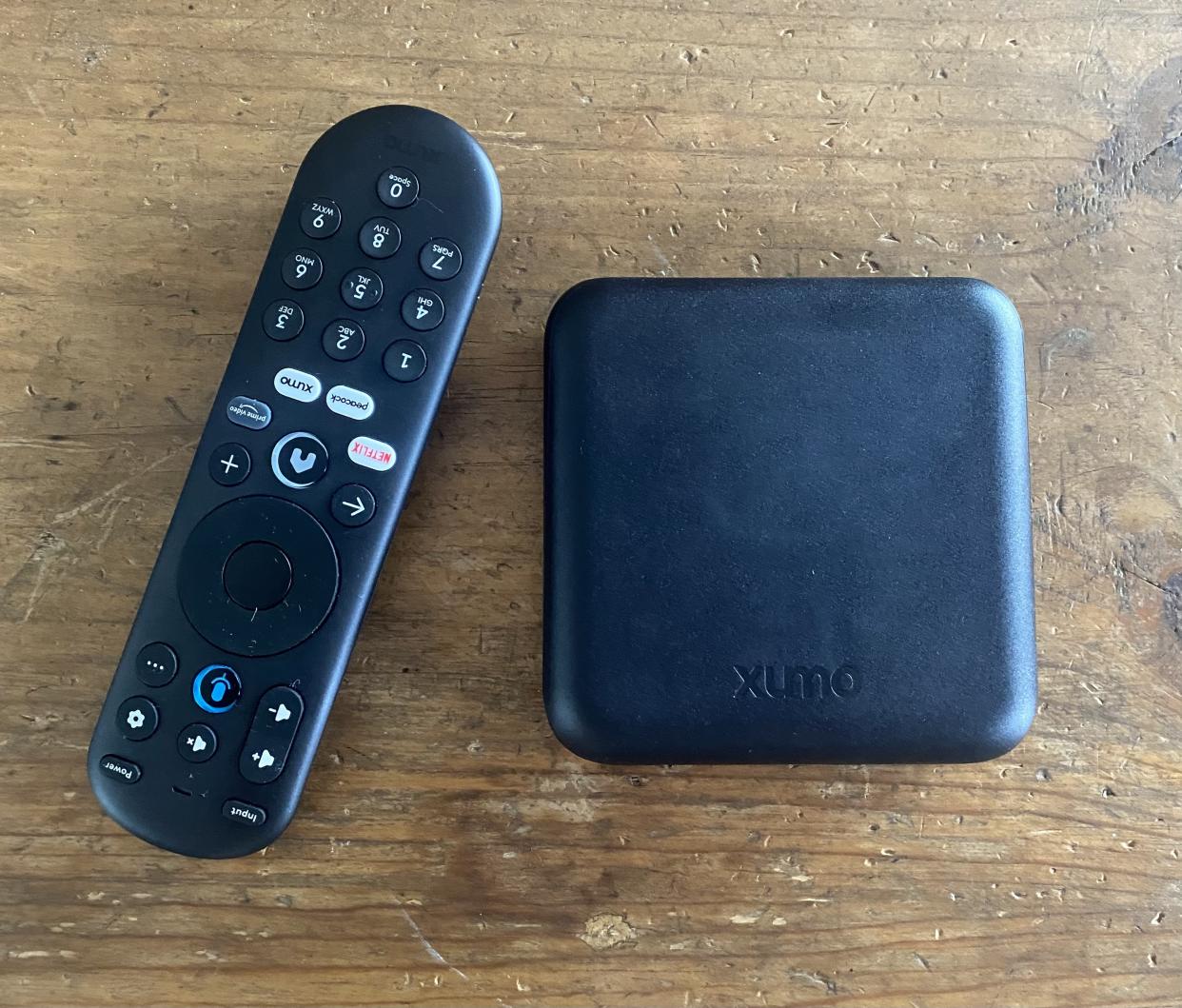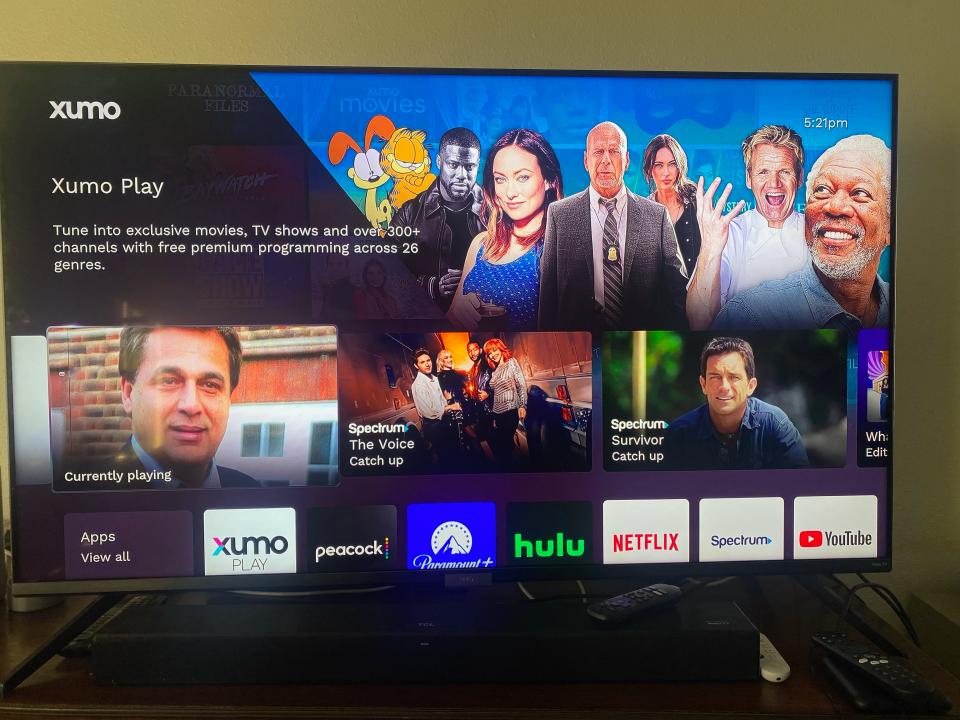Xumo Stream Box Reviewed: The First OTT Player From Comcast and Charter’s JV Has a Few Bugs and Limitations, but We Can Still See Potential

Just a decade ago, when 86% of U.S. homes subscribed to traditional pay TV, Comcast and Charter Communications had undisputed “gateway” control of living rooms in their respective cable footprints via their big, bulky, power-hungry — and very proprietary — DVR set-tops.
These days, with pay TV penetration down to around 64% and the margins squeezed out of the video business, the nation's top cable operators would just as soon have you stream your video with an app. The better to sell you multi-Gigabit-speed broadband, my dear.
But that doesn’t mean Comcast and Charter want to surrender gateway living room control of video data and advertising monetization to Roku, Amazon and Google.
Enter the Xumo Stream Box, the first new 4K-capable streaming gadget developed by Comcast and Charter's Xumo TV joint venture. (The box’s debut comes about four months after Best Buy and other retailers debuted Hisense and Element smart TV's powered by Xumo.)
Also Read: Comcast’s Xumo-Branded Smart TVs Are Getting Good Reviews But Are Already Deeply Discounted
Over the long holiday weekend, our cable provider, Charter, sent Stream Box to us for review.
Initial setup wasn't hard (although we ran into some operational problems later that we'll get into a bit in a scroll).
We first played around with the copious preloaded apps — all the big SVODs were preinstalled, including Netflix, Hulu, Amazon Prime Video, Disney Plus, Max, Apple TV Plus, Paramount Plus and Peacock. And QR-code signup made authentication easy enough.
Foundationed on what is now called the "Comcast Entertainment Operating System," the UX is similar in aesthetic to, as The Verge noted, Google TV/Android TV with the environment emphasizing live TV from free ad-supported sources. Turn on Stream Box, and you’re immediately tuned into FAST programming from the Xumo Play (we were automatically placed into a presentation of NBC News’s Dateline).
Scroll below the apps and you roll right into a traditional pay TV-like programming grid, defaulting to Xumo Play on startup. And if that FAST isn't the one you want, Tubi, Pluto TV, Freevee, Plex and other free services are also preloaded and are a click away from filling in that guide with their content.
The experience isn't too dissimilar from turning on a traditional pay TV set-top, which is probably the idea.

Since Next TV's L.A. headquarters only takes 400 Gbps-speed internet from Charter (at a pricey $84.99 a month), and not TV, we weren’t able to use the device’s primary app, Spectrum TV. And of course, since we're not in Comcast's footprint, we can't use the Xfinity Stream app, either. These apps would let us enjoy our pay TV subscription without a traditional propriety set-top.
And while the Stream Box’s preinstalled selection of apps is robust, the fact that we couldn't add apps was a major limitation. For example, if we were looking to watch the L.A. Kings’ preseason game Wednesday against Colorado on Bally Sports Plus, we'd be SOL without an alternative streaming gadget because the RSN’s DTC app doesn't come preloaded on Xumo Stream Plus.
Other notable apps were missing — Stream Box comes loaded with Sling TV, for instance, but not DirecTV Stream. (We can only assume that Charter will upload the apps for its new Lakers and Dodgers DTC services when they go live.)
And as mentioned, we did have a little operational/support trouble out of the gate. On Monday morning, the device booted to an onscreen message reading “Hello/Hola.” We pressed OK on our remote dozens of times. The device kept not reading the remote and shutting down.
We powered down the device for 30 seconds, and that didn’t solve the problem.
We spent time live-chatting with tech support, which had us do a factory reset on the gadget. That was a difficult exchange, since the individual providing support wasn’t trained to help customers find the button needed to trigger the reset. It's somewhat hidden in plain sight on the back of the device. He kept saying, “press the button,” and we kept responding, ”what button?”
Nothing worked. Eventually, the rep kicked us up to a higher level of support (we still haven't heard back). However, an hour later, we were able to figure out the problem independently — we rebooted the remote by taking the batteries out for 10 seconds, and everything seemed to work fine.
It's not particularly shocking or deal-breaking for setup to go a little less than seamlessly for a consumer-grade computer device supplied by telecom companies dabbling in a whole new business.
Likewise, Xumo Stream Box’s utility shouldn't be gauged by folks like us, who have gotten used to more-developed streaming tech. We cut the cord 10 years ago. And we spent part of our late-night weekend streaming John Schlesinger’s 1975 film Day of the Locust, featuring Donald Sutherland and Karen Black, on a buggy, far-flung AVOD channel that Roku search directed us to. Forget Bally Sports Plus — you will never find this channel in a million iterations on Xumo Stream Box.
We’re pretty used to finding whatever we want with the vast, developed TVOS platforms, like Roku, whose executives like to remind everyone that the TVOS gadget game has a high barrier of entry at this point.
Maybe, but controlling the broadband of nearly 63 million U.S. homes between them, Comcast and Charter certainly have a pass to get into the TVOS party if they choose to try.
A lot of their customers are older and have become used to the traditional grids of X1 and Spectrum Guide. For them, Stream Box — and its old-school hardline Ethernet connection port — will be just fine as an entry point into streaming, and Comcast and Charter can continue to control their customer relationship, data and ad transactions, just as it always has.
Comcast has understood this at least since 2019, when it began giving away its legacy Xfinity Flex streaming boxes to its broadband-only customers. The Xumo JV said last week that Comcast will soon roll out the Stream Box to these same internet customers.
Charter's initial business model for the Stream Box is a little more perplexing to us, with the cable company choosing instead to target its video base. It's now selling the device for $60, or a $5-a-month lease, to existing Spectrum TV customers. New customers can use the box free for a year before they start getting dinged monthly lease charges.
But again, it’s early days.
As we unplugged the Stream Box Monday and let Roku take our TV back over for Monday Night Football, we wondered about the possibilities. What if, say, during football season, Comcast and Charter cooked up an inexpensive bundle that featured not only access to the three broadcasters that have NFL rights — CBS, NBC and Fox — but also packaged in NFL RedZone, then gave away the box and the bundle to every one of their 63 million-plus broadband homes?
We'd all have access to most of the live NFL without an expensive linear or virtual pay TV subscription. That would be a heck of a customer-retention mechanism that would make folks like us think thrice about cutting wireline broadband in favor of cheap fixed wireless access.
And the Stream Box could also be a “gateway drug” to return to traditional pay TV. That big Monday Night Football game on ESPN? Maybe throw the ol’ 16-digit credit-card number Charter’s way so you can finally use that Spectrum Guide app and watch the game live.